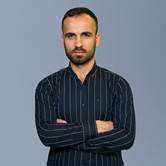
Pro-Turkish Syrian fighters gather near the town of Azaz in Syria's northern Aleppo province, October 10, 2019. Photo: Nazeer Al-Khatib / AFP
Syria’s Kurds are outnumbered and outgunned by their Turkish adversaries, which have an arsenal of modern weaponry, an air force, and an army of Syrian proxies to carry out their offensive. The Syrian Democratic Forces (SDF), meanwhile, has been battle-hardened by its war with ISIS and its thorough US training.
The Turkish military and its proxies launched an attack on the Kurdish-led Syrian Democratic Forces (SDF) along the Syria-Turkey border on Wednesday evening.
There are an estimated 40,000 SDF fighters in Syria, but it is not clear how many are involved in resisting the invasion.
Meanwhile, around 14,000 Turkish-backed Syrian proxies, under the umbrella of the ‘National Army’, are said to be taking part in Operation Peace Spring.
Turkey has gathered dozens of Syrian groups under this umbrella, which is the armed wing of the Syrian National Coalition (SNC). The most prominent group under the umbrella is the Hamza Brigade.
Most of these forces took part in Operation Olive Branch in 2018 against Kurdish forces in Afrin, which was taken in March that year following a two-month conflict.
It is clear that Turkey and the SDF have utterly different weapons capabilities.
Turkey can call upon Kasirga missiles with a range of 100 kilometers, MPT-76 National Infantry Rifles with a range of 600 meters, Cobra armoured personnel carriers which can carry up to nine personnel, MIZRAK-O armor piercing rockets, T129 ATAK attack helicopters, T-155 Storm howitzers, POYRAZ howitzers, and the Koral Electronic Warfare System, according to CNN Turk.
Meanwhile, the SDF defenders are mostly reliant on mortar shells and AK-47 assault rifles, according to Rudaw’s correspondent in northern Syria, Viviyan Fatah, who has covered several of the initial clashes.
Rudaw English approached Nuri Mahmoud, spokesperson for the Kurdish People’s Protection Units (YPG), which forms the backbone of the SDF, to get a clearer picture of the SDF arsenal. He declined to comment. Rudaw also approached, Gabriel Kino, a spokesman for the SDF, but he was also not available to comment.
Turkey considers the YPG as the Syrian offshoot of the Kurdistan Workers’ Party (PKK), which has fought a decades-long war with the Turkish state for greater political and cultural rights for Kurds in Turkey.
Bilal Wahab, a Kurdish analyst and Wagner Fellow at The Washington Institute for Near East Policy, told Rudaw English the conflict is “imbalanced”.
“Militarily, this conflict is imbalanced. Turkey is a member of NATO, hence its military superiority, including crucially a strong air force, high-tech surveillance, and coordination capability,” he said.
However, the SDF fighters “are well-trained and have been hardened by the experience of fighting ISIS, and have accumulated a magnitude of weaponry to resist a ground offensive. But they lack air defenses,” he added.
Such superiority of Turkish forces on the ground and the air will “further tip the military balance against the SDF”, Wahab believes.
Because the operation has been so widely condemned, Wahab suggests Turkey could win the battle militarily but ultimately lose the war of public opinion.
“Unlike its military superiority, the legitimacy of Turkey’s offensive war in Syria is internationally condemned, which would erode further with the rise of civilian casualties and refugees,” he said.
The Turkish military has also used high-tech weaponry in its operations against the PKK in its southeastern provinces and in the mountains of the Iraqi Kurdistan Region. Although Ankara has killed several top PKK commanders in recent months, it has far from defeated the group.
Nevertheless, Murat Karayilan, a member of PKK’s executive body, told the party-affiliated Sterk TV in August that the group needs to modernize and professionalize, as its classical techniques of warfare have become outmoded in the face of Turkish advances.
“We want to fully modernize, reinvigorate and professionalize guerrillas who should be capable of prevailing over the enemy’s intelligence and techniques,” Karayilan said.
At the end of day two of Operation Peace Spring, the SDF appears to have repelled several attempted ground offensives, but has suffered losses under artillery fire and airstrikes.








Comments
Rudaw moderates all comments submitted on our website. We welcome comments which are relevant to the article and encourage further discussion about the issues that matter to you. We also welcome constructive criticism about Rudaw.
To be approved for publication, however, your comments must meet our community guidelines.
We will not tolerate the following: profanity, threats, personal attacks, vulgarity, abuse (such as sexism, racism, homophobia or xenophobia), or commercial or personal promotion.
Comments that do not meet our guidelines will be rejected. Comments are not edited – they are either approved or rejected.
Post a comment